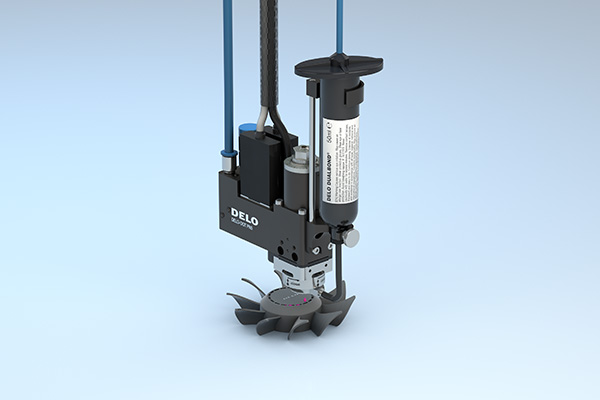Precise and fast balancing of rotating parts is possible - with the balancing process from Präzisionsmaschinenbau Bobertag (PMB). After a highly accurate measurement of the unbalance, PMB uses an additive process to correct it. DELO balancing masses are quickly and precisely dispensed in very small quantities and then cured in seconds. Among other things, balancing minimizes noise and increases durability.
This provides users with a solution for industrial series processes that require maximum accuracy without removing material from the workpiece. With minimum possible correction accuracies of 0.1 mg, residual unbalances of 1 mg*mm can be achieved, as required in the optical industry, for example. Due to its very good process reliability, this additive approach is also interesting for applications with medium unbalances of 50-100 mg*mm, such as small fans.
In the process, a calibration station in the PMB balancing machine first determines the unbalance. The DELO-DOT PN5 micro-metering valve then applies the additive balancing mass in one or two planes quickly, precisely and without contact. The balancing compounds used are light-curing adhesives from DELO, which are specially modified and have a high density.
Exposure to DELOLUX UV lamps causes the balancing masses to harden completely within a few seconds. Finally, a control measurement verifies the result. The balancing process is usually completed after one correction step. Balancing can be carried out directly in the calibration station. If very short cycle times are required for large series, the process steps can also run in parallel in multi-station systems.
"This development is available as a standard solution which is easy to implement and is scalable from small batch to large-scale production,” explains Manfred Bobertag, managing director of PMB. "Compared to other processes, users benefit from fast cycle times, freedom from chips and perfectly controllable mass correction with this approach."
"This is another example of how adhesives can do far more than just permanently bond components together," says Dr. Karl Bitzer, Managing Director at DELO. "In fact, our products are multifunctional materials that we tailor to enable completely new applications and intelligent processes."
Balancing is usually dominated by subtractive processes, machining and, increasingly, lasers. Compared to additive processes, additional "sacrificial material" must be available in the component design, which can then be partially removed. Additive balancing, on the other hand, is more material-efficient. This is because exactly what is needed is applied.
Balancing is required for most applications with rotating components, e.g. electric motors, fans, pumps and turbines. Improved unbalance increases quality by reducing vibrations and loads. It enables higher speeds with lower noise levels and a longer lifetime.







